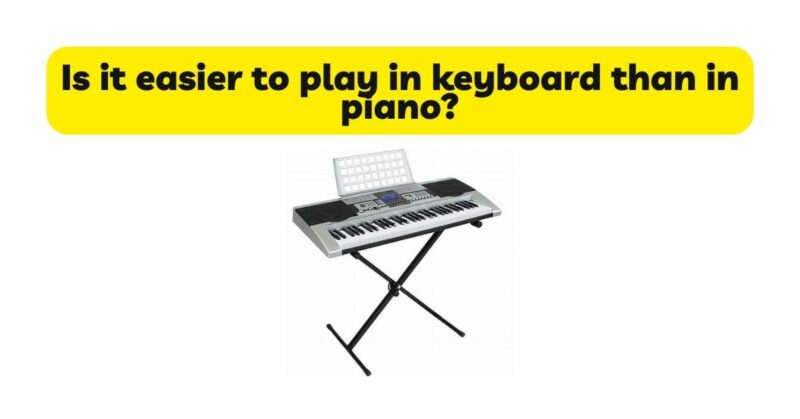Learning to play a musical instrument is a rewarding and fulfilling endeavor. When it comes to keyboard instruments, pianos and keyboards are two popular choices. An often-debated question among musicians and aspiring learners is whether it is easier to play the keyboard or the piano. In this article, we will delve into the factors that influence the ease of playing each instrument, including technique, physicality, musicality, and learning resources. By examining these aspects, we can gain a better understanding of the challenges and advantages associated with each instrument.
- Technique:
Technique plays a crucial role in playing any instrument, and the piano and keyboard are no exception. When it comes to the piano, the technique involves precise finger placement, hand position, and control over dynamics. The piano’s weighted keys and larger size require the development of finger strength and coordination. The weight and resistance of the keys can pose a challenge for beginners, but they contribute to building finger dexterity and control over time.
On the other hand, keyboards often have lighter and less resistant keys, making them initially easier to play for beginners. The absence of weighted keys can provide a lighter touch experience. However, this lighter touch may result in a less nuanced control over dynamics and can make the transition to a piano more challenging in the future.
- Physicality:
The physicality of playing an instrument involves the posture, hand position, and body movements required during performance. Playing the piano requires proper sitting posture, positioning of the hands, and reaching across the keyboard. The larger size and weighted keys demand a certain level of physical strength and coordination. While this may pose a challenge initially, it contributes to the development of muscle memory, stamina, and overall physical control.
Keyboards, on the other hand, are often more compact and portable, allowing for more flexibility in positioning. The lighter keys and smaller size can be more accessible for individuals with smaller hands or limited physical strength. However, the compact size may restrict the range of motion and hand placement, potentially limiting certain advanced techniques.
- Musicality:
Playing an instrument involves understanding and expressing musical elements such as rhythm, melody, dynamics, and phrasing. The piano offers a wide range of expression due to its dynamic capabilities and ability to produce a broad spectrum of tones. The acoustic nature of the piano allows for a rich and resonant sound, enabling musicians to convey emotions and musical nuances effectively.
Keyboards, while capable of producing a variety of sounds and effects, may have limitations in terms of sound quality and tonal depth. However, modern keyboards often incorporate features such as touch sensitivity and aftertouch, aiming to mimic the expressive capabilities of a piano. These features can aid in developing musicality, especially for beginners.
- Learning Resources:
The availability of learning resources can greatly impact the ease of learning an instrument. When it comes to the piano, there is a wealth of educational materials, method books, and online resources specifically tailored for piano learners. The long-standing history and popularity of the piano have resulted in a comprehensive learning ecosystem, making it easier for beginners to find structured guidance and support.
Keyboards, although they share similarities with the piano, have a more diverse range of applications and genres. While there are resources available for keyboard players, the vastness of styles and approaches can make it more challenging to find comprehensive and standardized learning materials. However, keyboards often come with built-in learning tools, interactive tutorials, and connectivity options to enhance the learning experience.
Conclusion:
In conclusion, determining whether it is easier to play the keyboard or the piano depends on various factors and individual preferences. The piano demands a more developed technique, physical strength, and a nuanced understanding of musical expression. However, the piano’s weighted keys and larger size contribute to building a solid foundation for musicians.
Keyboards offer a more accessible starting point, with lighter keys and greater portability. They can provide beginners with a quicker learning curve and a broader range of sounds and styles to explore. However, the absence of weighted keys and limitations in sound quality may pose challenges for advanced musicians seeking greater expressive capabilities.
Ultimately, the choice between the keyboard and piano depends on the learner’s goals, musical interests, and personal preferences. Both instruments offer unique advantages and challenges. With dedication, practice, and proper guidance, mastery can be achieved on either instrument, allowing musicians to unlock their musical potential and enjoy the joys of playing.


